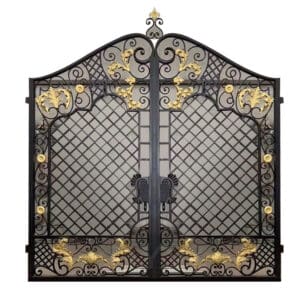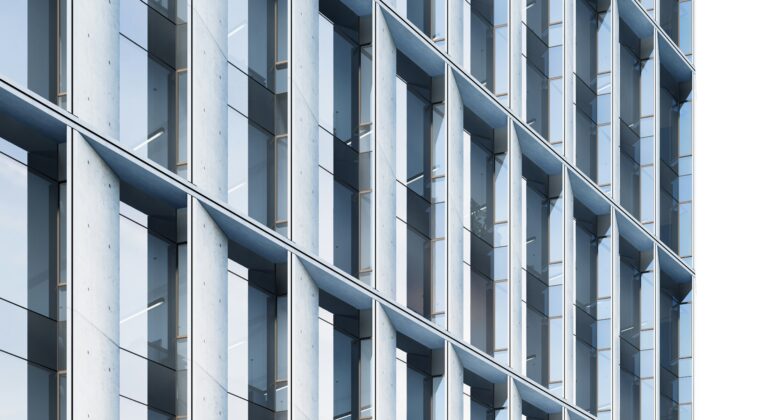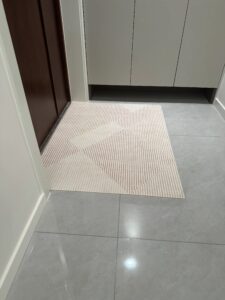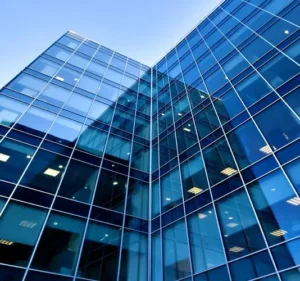
How to get custom aluminum doors?
How to get custom aluminum doors? Need sleek, durable entryways but overwhelmed by options? Custom aluminum doors range from $1,200-$8,000+ installed, with lead times of
Curtain walls have played a crucial role in modern architecture, transforming how buildings are designed and constructed. As a non-structural outer covering, curtain walls provide aesthetic, functional, and structural benefits that have shaped urban landscapes and the construction industry. But why were curtain walls so important? Let’s explore their significance.

The development of curtain walls dates back to the early 19th century, but their widespread adoption began in the mid-20th century with the rise of steel and reinforced concrete structures. Unlike traditional load-bearing walls, curtain walls are lightweight, allowing architects to design taller, more innovative buildings without the restrictions of thick, heavy masonry. This advancement revolutionized commercial and residential architecture, enabling the iconic glass skyscrapers that define modern cities.
One of the primary reasons curtain walls gained popularity is their ability to create sleek, modern facades. By utilizing glass, aluminum, and other contemporary materials, architects could design buildings with striking visual appeal. Curtain walls provide a seamless and elegant appearance, making them a preferred choice for high-rise structures, office buildings, and commercial centers.
Curtain walls contribute significantly to energy conservation. Modern curtain wall systems incorporate double-glazing, low-emissivity (Low-E) coatings, and thermal breaks to minimize heat transfer. This reduces the reliance on artificial heating and cooling, leading to lower energy costs and improved sustainability. As energy efficiency regulations became stricter, the importance of curtain walls in green building initiatives grew.
A well-designed curtain wall acts as a protective shield against wind, rain, and temperature fluctuations. Unlike traditional walls, which can absorb moisture and degrade over time, curtain walls provide superior weather resistance. They prevent water infiltration and help maintain the building’s structural integrity over the years.
Although curtain walls are non-load-bearing, they enhance a building’s structural performance by distributing wind loads and reducing sway. This is particularly vital for high-rise buildings, where wind pressure can be intense. Additionally, modern curtain wall systems are engineered to be fire-resistant, preventing the rapid spread of flames in case of an emergency.
By incorporating large expanses of glass, curtain walls allow natural light to penetrate deep into the building. This not only creates a more pleasant indoor environment but also enhances occupant well-being and productivity. Natural light reduces the need for artificial lighting, further improving energy efficiency.
Curtain walls have played a pivotal role in shaping modern architecture, offering numerous advantages that go beyond aesthetics. From improving energy efficiency to protecting buildings against environmental challenges, they have been essential in the evolution of construction practices. As technology continues to advance, curtain walls will remain an integral part of innovative and sustainable building designs.
Whether you are a developer, architect, or property owner, understanding the importance of curtain walls can help you make informed decisions about your building projects. Their ability to enhance both functionality and visual appeal makes them a cornerstone of contemporary architecture.

How to get custom aluminum doors? Need sleek, durable entryways but overwhelmed by options? Custom aluminum doors range from $1,200-$8,000+ installed, with lead times of

How to make custom door mats? Want personalized home entryways without $75+ retail markups? Crafting custom doormats costs just $15-$35 using accessible outdoor-grade materials like

How much do custom window screens cost? Frustrated by insects ruining your fresh air enjoyment? Custom window screens typically cost $50-$300 per unit installed –

What is the best type of wall covering? Tired of staring at dull walls but overwhelmed by options? The “best” wall covering depends entirely on

How to import better doors and windows from China? Want high-quality building products at 30-50% below local prices? Importing from China can save you thousands

Is it cheaper to build a pergola or buy one? Struggling to decide between DIY construction and pre-built pergolas? Building your own typically costs 40-60%
Before contacting suppliers, it’s essential to determine the exact specifications of the windows and doors you need. This includes:
The more detailed you are, the easier it will be for suppliers to provide accurate quotes and product options.
China has a vast manufacturing industry, so it’s crucial to find reliable suppliers who can deliver quality products on time. Here’s how to start your search:
Consider factors like the supplier’s reputation, certifications, and product quality. It’s also wise to work with suppliers who are accustomed to exporting to your region, as they’ll be familiar with international standards and shipping requirements.
Before placing a large order, request samples. Samples give you a chance to assess the quality firsthand and confirm that it meets your standards. Be prepared to cover the costs of samples and shipping, but consider it an investment in ensuring you’re working with a trustworthy supplier.
When reviewing samples, pay attention to:
Once you’ve selected a supplier, it’s time to negotiate terms. Most suppliers expect some level of bargaining, especially for larger orders. Important aspects to discuss include:
Quality assurance is crucial, especially when importing from abroad. Consider these inspection steps:
Importing windows and doors involves managing shipping logistics and navigating customs procedures. Here are some key factors:
After confirming quality, shipping terms, and pricing, you can place your order. Ensure that:
When the products arrive, inspect them thoroughly. Ensure there’s no damage from transit, and verify that everything matches your specifications. If there are any issues, address them with the supplier immediately.